A casual listener might hear the Feelies’ version of “I’m Waiting for the Man,” from their 2023 live record, Some Kinda Love: Performing the Music of the Velvet Underground, as a straight-ahead cover. After all, the legendary New Jersey-based underground rock ’n’ roll band didn’t change the chord structure around. They didn’t really alter the instrumentation. They didn’t give it a profoundly new feel that recontextualizes Lou Reed’s paean to a drug deal. No, they seem to simply convey the song with a svelte, efficient delivery.
But on the song, the Feelies do their thing, subtle though it might be. The band have had a knack for stripping songs to their necessary bits and making them their own since forming in the 1970s. Their slightly warped, minimal, high-speed take on the Beatles’ “Everybody’s Got Something to Hide Except Me and My Monkey” set the tone on their debut, 1980’s Crazy Rhythms, and they’ve since made covers an integral part of their records and live shows.
The Feelies’ history with the music of the Velvets runs deep, including recording the band’s “What Goes On” for 1988’s Only Life. On Some Kinda Love, they paint a bigger picture as they cover 18 songs from the VU catalog. Throughout, the Feelies, in effect, convey an object lesson in how to approach the music of the Velvet Underground, offering refreshing lessons on how to rock ’n’ roll along the way.
Glenn Mercer's Gear
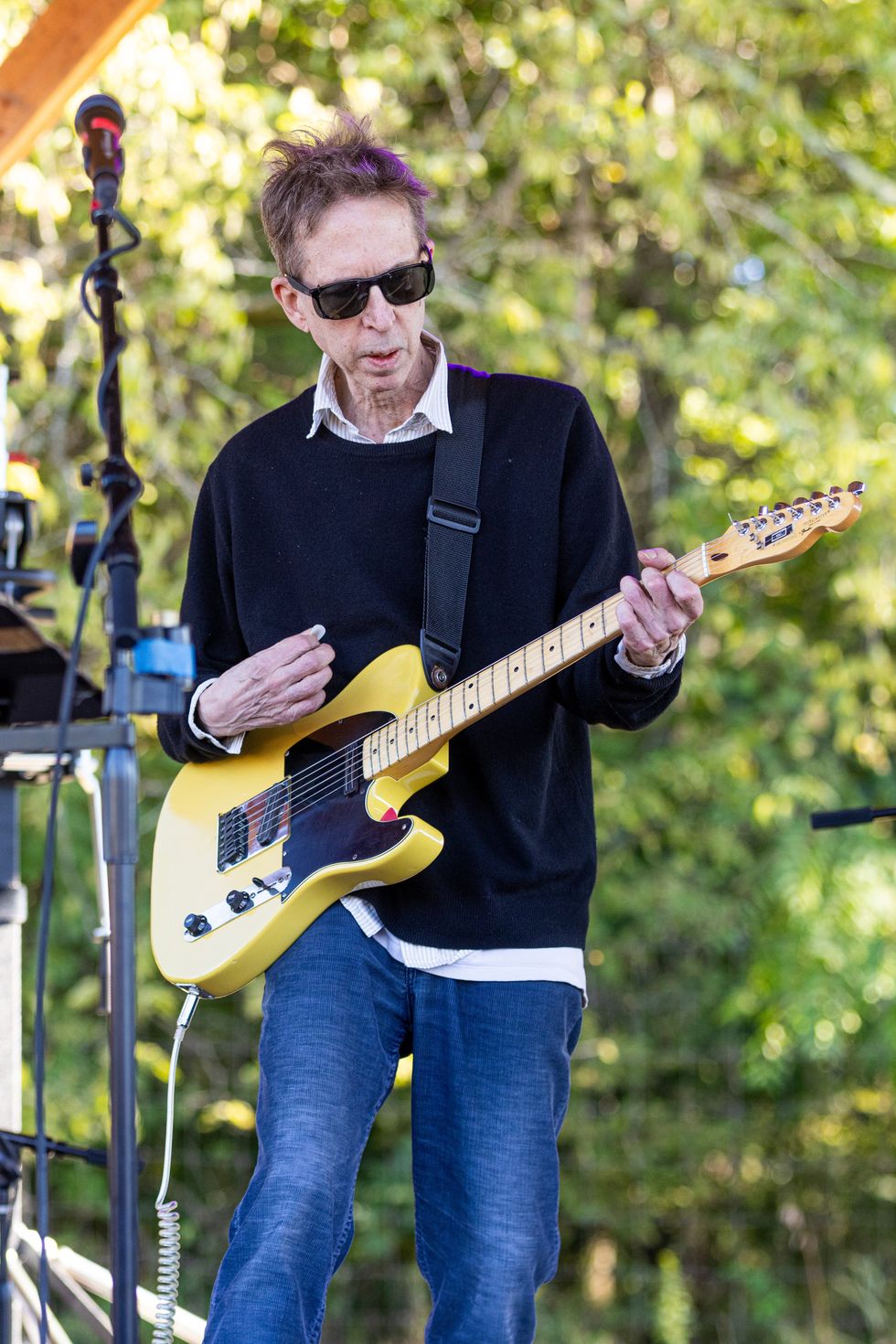
Glenn Mercer’s live rig consists of a modded Squier Telecaster, a simple pedal chain, and a modern Vox AV30 that he runs through a vintage Guild 1x12.
Photo by Tim Bugbee
Guitars
- Two modified Squier Telecasters
Amps
- Vox AV30
- ’50s Guild cab with JBL 12" speaker
Effects
- Boss Turbo Overdrive
- Boss Super Overdrive
- Boss Chorus
Strings & Picks
- D’Addario NYXL (.010-.046)
- Dean Markley triangle picks .50 mm
- Clayton picks
Let’s get back to “I’m Waiting for the Man” and consider its place in the rock canon with some extracurricular listening:
An early version of “I’m Waiting for the Man” appears on Words & Music, 1965, a collection of 23-year-old Reed’s demos for Pickwick Records, where he was a staff songwriter and session musician. It’s a humble slice of Greenwich Village folk, Reed’s vocal accompaniment a loose but grooving fingerpicked acoustic guitar figure.
In 1967, the song made its official debut on The Velvet Underground & Nico. The song is transformed and has arrived. The guitar figure has been boiled down to a droning two-chord vamp, with the exception of a four-measure turnaround that serves as the chorus. It’s electrified and distorted. Guitars sounds like they’re cutting through the tape. John Cale pounds piano clusters along with Moe Tucker’s propulsive tom and tambourine assault. Meanwhile, Reed coolly raps overtop. This is rock ’n’ roll in its most elemental form. All the energy, all the vibe, none of the frills.
“If you have to talk about stuff and work on stuff, then to me, you kind of lose the essence of what’s good about playing music. It’s all instinctual and telepathic.” —Glenn Mercer
A couple years later, in 1969, the band performed a live rendition of “I’m Waiting for the Man” for what would become 1972’s Live at Max’s Kansas City. By now, original Velvets Reed and guitarist Sterling Morrison were joined by the rhythm section of brothers Doug and Billy Yule, and together they deliver a tight, swaggering shuffle. Morrison reaches for the sky with bluesy bar-rock bends and trills and Lou howls and hollers. It’s loud, it’s alive. It’s also an indication of the Velvets’ evanescence. From folky strums to a pulsating psychedelia to proto-punk, nothing in their orbit remained the same in their short span.
There are other versions of the band playing the song, and the band’s approach varies—no matter what anyone tells you, don’t skip the pseudo-minimalist reading on the band’s 1993 reunion record, Live MCMXCIII. It’s not only great, but worth it for guitar nerds to hear Lou play the song in his headless-guitar phase. After their dissolution, Reed continued to reinvent on live albums; the John Lee Hooker-style approach he takes on Take No Prisoners is worth hearing. Tucker also recorded a delicately strummed, breathy version with moodier chords on I Spent a Week There the Other Night.
What the Velvet Underground did with the song within the band and beyond is one thing, but the perquisite reinvention in the hands of others affirmed its status as a rock ’n’ roll standard.
The Yardbirds seem to have been the first to cover “I’m Waiting for the Man,” not long after its release. Though it’s not on any official releases, it’s easy to find their energetic, rave-up version. Bowie’s popular cover glams it up, makes the turnaround chords a little more bluesy—replacing the dominant III chord that gives that part its doo-wop allure—and Mick Ronson plays some Spiders from Mars-era leads that seem take the song to a swankier part of town than Reed originally intended to describe. The U.K. Subs amplified the song’s punkish roots, Beck made a bachelor pad-friendly version, and Cheap Trick brought the song to arenas, with the histrionics that requires.
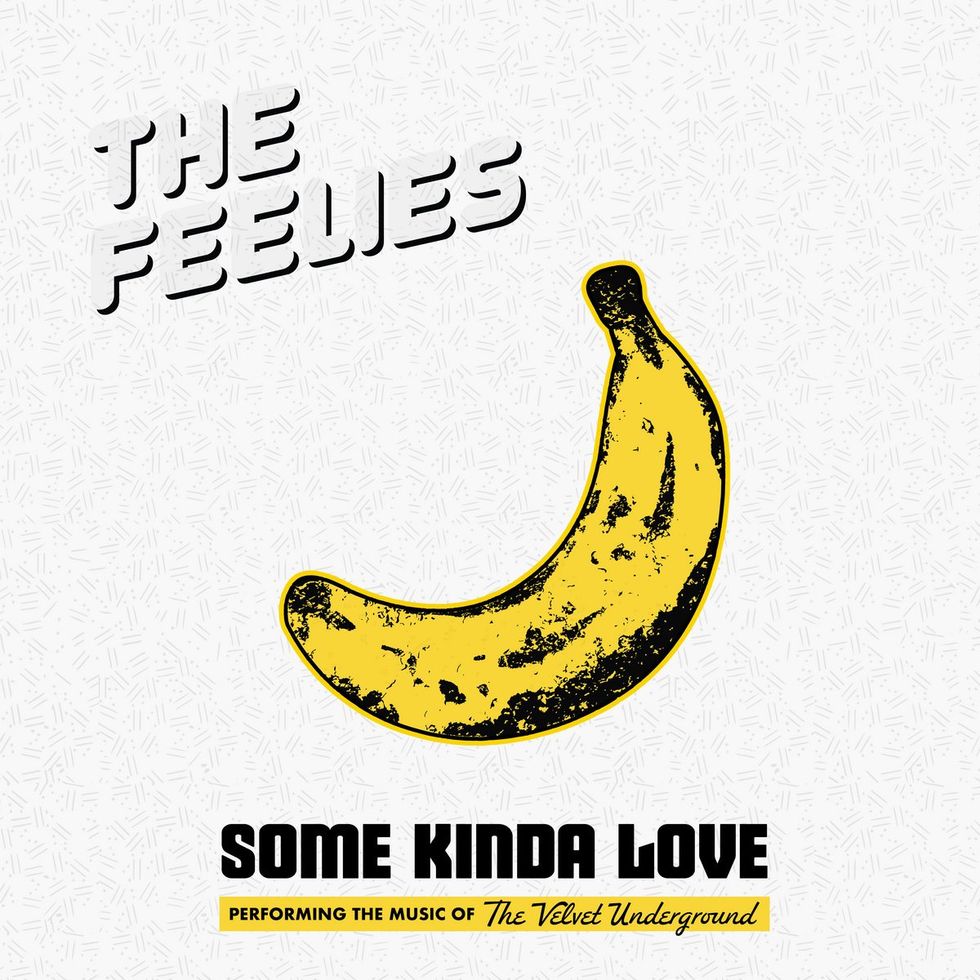
The Feelies evoke the VU by playing it straight from the heart. “We weren’t, like, super obsessed about it or anything,” says Mercer.
It’s against these covers that the nuances of the Feelies’ signature are laid bare. While other artists have looked beyond the limits set by the Velvets, on Some Kinda Love, the Feelies return “I’m Waiting for the Man” to its central musical premise. There is no stylistic reinvention. Nor do they kneel at the altar of the VU, copying every -ism of the original recording. They simply play the essential elements of the song.
Bill Million's Gear

Million says his preference for Gibson-style guitars evolved in response to Mercer’s Fenders, as a way to differentiate their sounds. Live, he runs his guitars and board into a Music Man with a vintage Gibson extension cab.
Photo by Matt Condon
Guitars
Amps
- Music Man 112 Sixty-Five (no speaker)
- Gibson GA-100 extension cab with 12" JBL speaker
Strings & Picks
- Ernie Ball Regular Slinky
- D’Addario Phosphor Bronze
- D’Addario Chromes (Flat)
- Dunlop picks .73 mm
Effects
- MXR Micro Amp
- Fulltone OCD
- Fulltone Fat-Boost
- Boss Chorus
- Maxon Overdrive
- DeArmond Volume Pedal
- Electro-Harmonix Canyon
- Electro-Harmonix Octavix
- Source Audio Vertigo Tremolo
- Ebow
As early as Crazy Rhythms, the band exhibited a kind of jittery, frenetic feel. As they moved from their early funkier art-rock inclinations to a more pastoral sound on 1986’s Peter Buck-co-producedThe Good Earth—on which they cemented their lineup—it stuck with them.
“I’ve never been that comfortable performing,” says Mercer. “I think that we took that nervousness, that stage fright element, and used it to our advantage. It made us appear to be the nervous awkward band or whatever.” Check out their performance in Jonathan Demme’s 1986 film Something Wild to see what the guitarist means as they take David Bowie’s “Fame” for a spin.
The connection between Mercer and Million is at the front and center of the Feelies’ sound. While they don’t shy from the traditional lead/rhythm route, their rhythmic hookup is notable. Together, they’re percussive, with chord stabs often bouncing between the two forming tense, funky interactions. To describe it, Million points to the Velvet Underground, but more so Keith Richards and Ron Wood’s classic “ancient art of weaving” approach to rhythm. “That’s the feeling I get when I’m playing,” he says. “We’ve been playing together so long that there is a lot of that guitar interaction. My approach is to weave between what Glenn’s doing, and what Stan’s doing as well with the drums, so there’s a reaction, little accents here and there. We’ve all become very good listeners over time with each other, so that stuff just falls into the pocket.”
The guitarists have had plenty of time to form their two-guitar thing—they’ve been playing together for about a half century at this point. “Originally, we started playing together in a different band,” Mercer points out. “Bill played bass, and I played guitar, and Dave played drums. So, that was just three instruments with a singer. Then, Bill suggested switching to guitar and getting a bass player. I think right from the start, we were just playing the songs, we didn’t talk about what each one was going to do. It was understood.”
“They had this sort of quiet energy. It’s just as much energy as the Stooges or the MC5, but in a different way.” —Bill Millon on the Velvet Underground
From that, their style coalesced and evolved, and Mercer says they haven’t second-guessed it. “It’s instinctual. I think if it was anything other than that, it wouldn’t have lasted as long. I mean, if you have to talk about stuff and work on stuff, then to me, you kind of lose the essence of what’s good about playing music. It’s all instinctual and telepathic.”
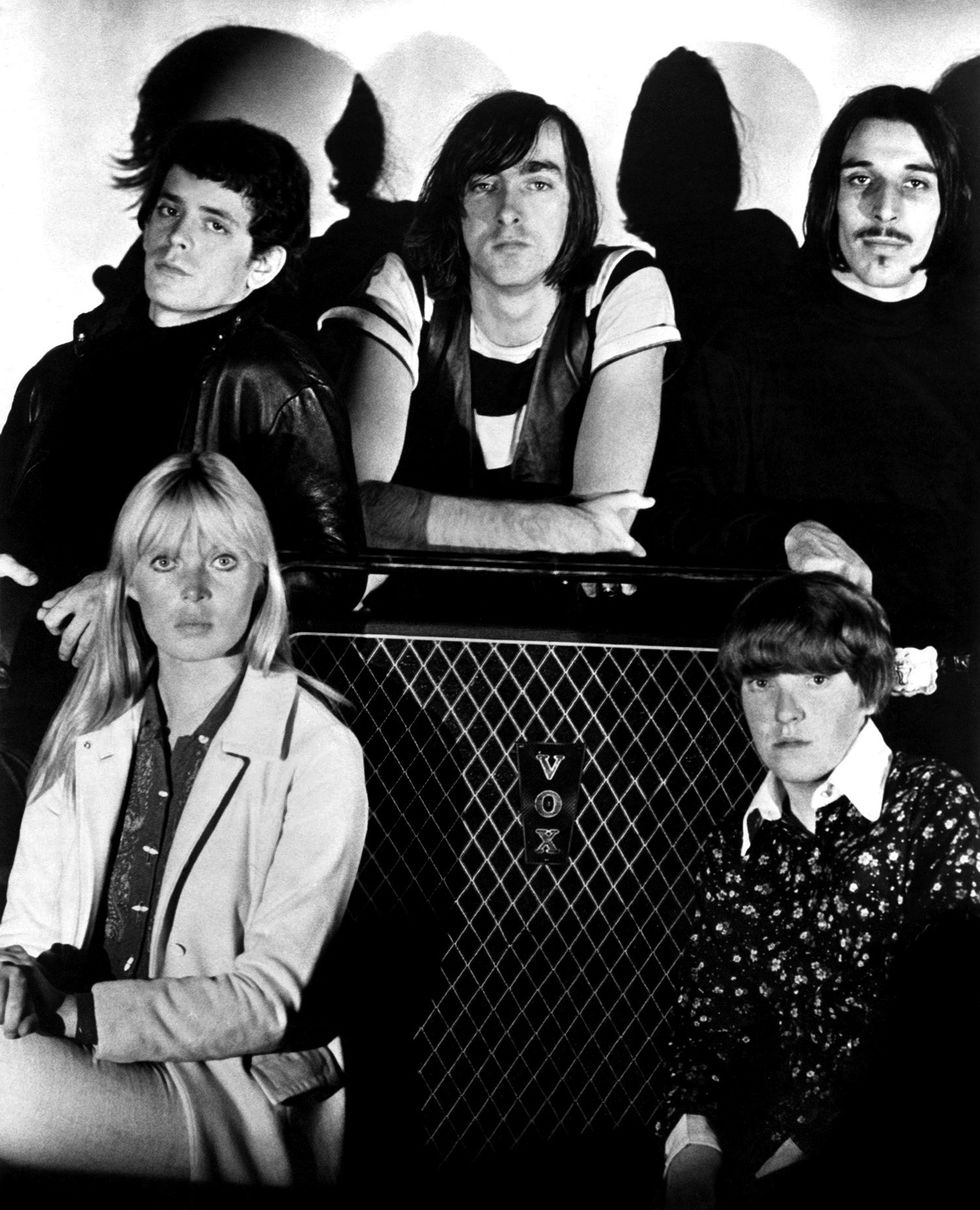
The Velvet Underground and Nico hanging on a Vox in 1966 (clockwise from top left): Lou Reed, Sterling Morrison, John Cale, Moe Tucker, and Nico.
Their guitar tastes have even evolved around each other, and Million cites his own preference for Gibsons—using a Les Paul early on and switching to ES-335s in the mid ’80s, sticking to them ever since—as a reaction to Mercer’s Fenders, which these days are a pair of modified Squier Telecasters.
The two guitarists also share many influences; they both reference the Stooges, the MC5, the Beatles, and the Stones in our conversations. Mercer points to Ron Asheton as an influence on his leads, which on Some Kinda Love is audible in a simmering-just-before-the-point-of-boiling-over kind of way on “Rock & Roll” and on the tumbling double-guitar tangle-up at the end of “Run Run Run.” Notably, Million talks about being into the Velvet Underground in high school, citing Reed’s vocals, Tucker’s drumming, and how “the guitars were almost approached like drums in a way.”
“We took that nervousness, that stage fright element, and used it to our advantage.” —Glenn Mercer
Mercer, though, took a little longer to come around. “I didn’t like them,” he says. “A couple of songs I thought were pretty good. ‘Waiting for the Man,’” I really liked that. The rest of it just seemed like a hodgepodge of art stuff. I guess by the time the third record [1969’s self-titled album] came along it really sunk in.”
Lou Reed heard something he liked in the Feelies and tapped them to open for his 1989 tour in support of his New York album. He first linked up with the band at a holiday party for Long Island’s WDRE FM. Million remembers the party and says, when the band received their invite to perform, “I think it was me that said, as a joke, ‘If Lou plays a song with us, we’ll do it.’” The next thing they knew they were onstage together. “We were playing those songs at this really incredibly fast tempo! And he just seemed like he really enjoyed himself. Because of that he asked us to go on tour with him.”
Million remembers Reed as “very supportive of the Feelies,” and says they shared dinner with him before most of their concerts together. “There was one show,” the guitarist recalls, “where his soundcheck was running longer. They informed him that they would have to probably skip our soundcheck, and he just said, ‘If the Feelies don’t get a soundcheck, I’m not playing.’ So, that was our relationship with him.”
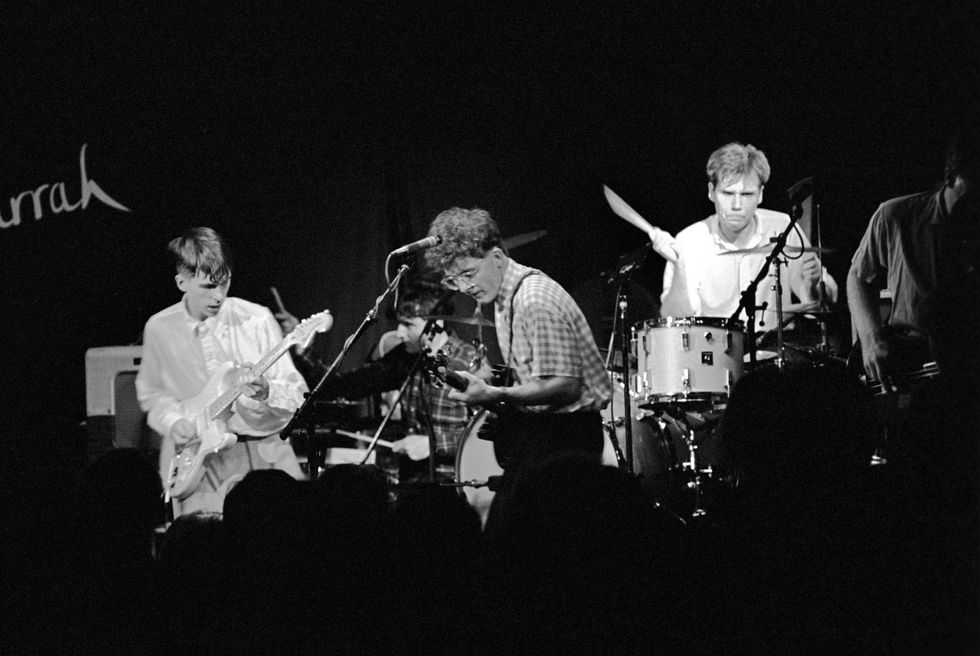
The young Feelies at Hurrah in New York City on September 11, 1980. From left: Mercer, Weckerman, Million, and drummer Anton Fier.
Photo by Ebet Roberts
It’s by pure kismet that after years of covering the Velvet Underground, and decades after playing the songs alongside Reed, the Feelies have come to pay tribute with Some Kinda Love. They received an invitation from the curators of The Velvet Underground Experience (the 2018 version of the 2016 The Velvet Underground: New York Extravaganza exhibit in Paris), and Mercer explains, “Their idea was to get a bunch of bands that were inspired by or influenced by the Velvet Underground to perform. They contacted us and we thought it would be cool to do.”
But it wasn’t to be. “They were a little bit delayed in moving the exhibit, so that in the interim, they lost their lease and had to find a new venue.” When that venue didn’t have space for a live rock band—though Mercer did end up performing—he says, “We were already kind of semi-rehearsed and getting excited about doing it. So we said, we’ll just do a concert on our own at a different venue.”
On October 13, 2018, the band played the Velvets set that would become Some Kinda Love at White Eagle Hall in Jersey City, New Jersey. (They also played a second set of Feelies songs and delivered three VU-less encores.) The record clocks in at 71 minutes, so it was a long night. And a thrilling one, no doubt. Because the Feelies deliver every song on the record—from their funky “There She Goes Again” to the driving, percussive strums of “Who Loves the Sun” to the droning, gothic “All Tomorrow’s Parties”—with the same natural vibe that they seem to bring to everything they do.
“We kind of use their arrangements as a little bit of a template, basically just to put in enough to evoke the original recordings,” says Mercer. “We weren’t like, super obsessed about it or anything.”
In contrast to every stylistically varied version of “I’m Waiting for the Man” considered here, the Feelies prove the VU’s music, like all truly great rock ’n’ roll, seems to demand nothing more than simplicity and honesty. Nothing more and nothing less.
The Feelies live in that world. It’s not complicated. And it’s not intellectual. It’s elemental. And once you tap into it, it’s inescapable.
And as Some Kinda Love proves, that attitude, that approach, might just make the Feelies the greatest interpreter of the Velvet Underground anyone could wish for.
YouTube It
The Feelies perform their groovy, percussive cover of “Run Run Run” that appears on Some Kinda Love.
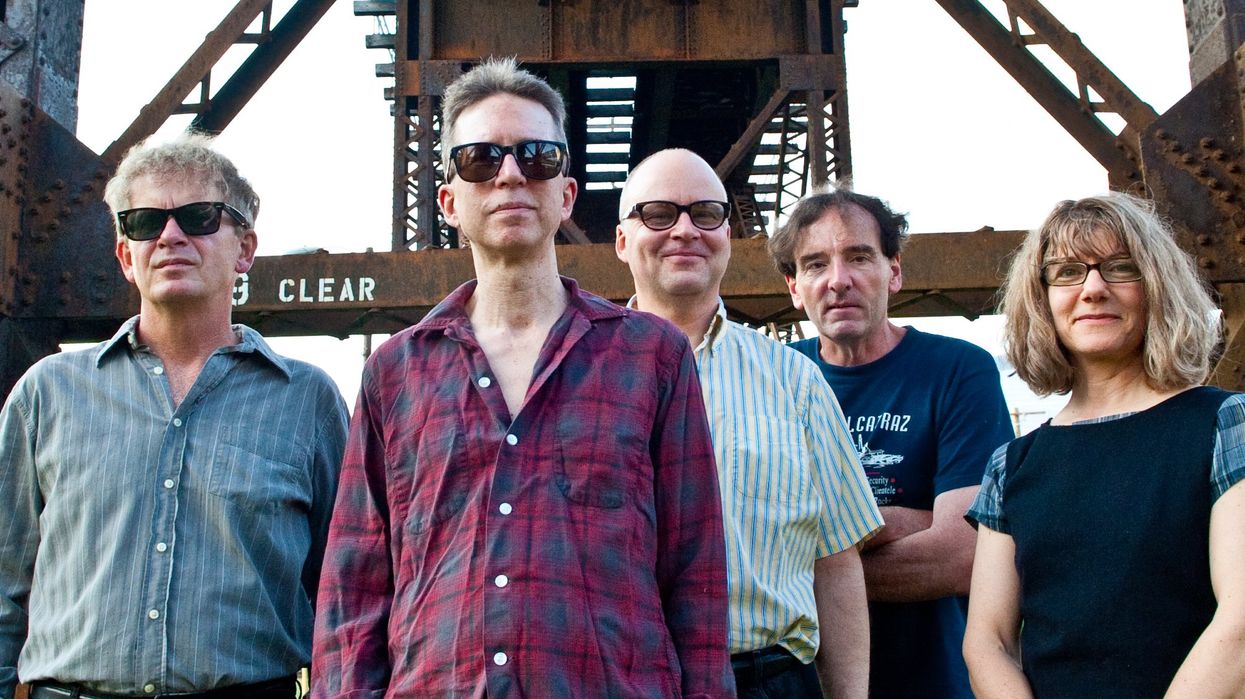





![Rig Rundown: AFI [2025]](https://www.premierguitar.com/media-library/youtube.jpg?id=62064741&width=1245&height=700&quality=70&coordinates=0%2C0%2C0%2C0)












 Shop Scott's Rig
Shop Scott's Rig













 Zach loves his Sovtek Mig 60 head, which he plays through a cab he built himself at a pipe-organ shop in Denver. Every glue joint is lined with thin leather for maximum air tightness, and it’s stocked with Celestion G12M Greenback speakers.
Zach loves his Sovtek Mig 60 head, which he plays through a cab he built himself at a pipe-organ shop in Denver. Every glue joint is lined with thin leather for maximum air tightness, and it’s stocked with Celestion G12M Greenback speakers.












![Devon Eisenbarger [Katy Perry] Rig Rundown](https://www.premierguitar.com/media-library/youtube.jpg?id=61774583&width=1245&height=700&quality=70&coordinates=0%2C0%2C0%2C0)








 Luis Munoz makes the catch.
Luis Munoz makes the catch.


